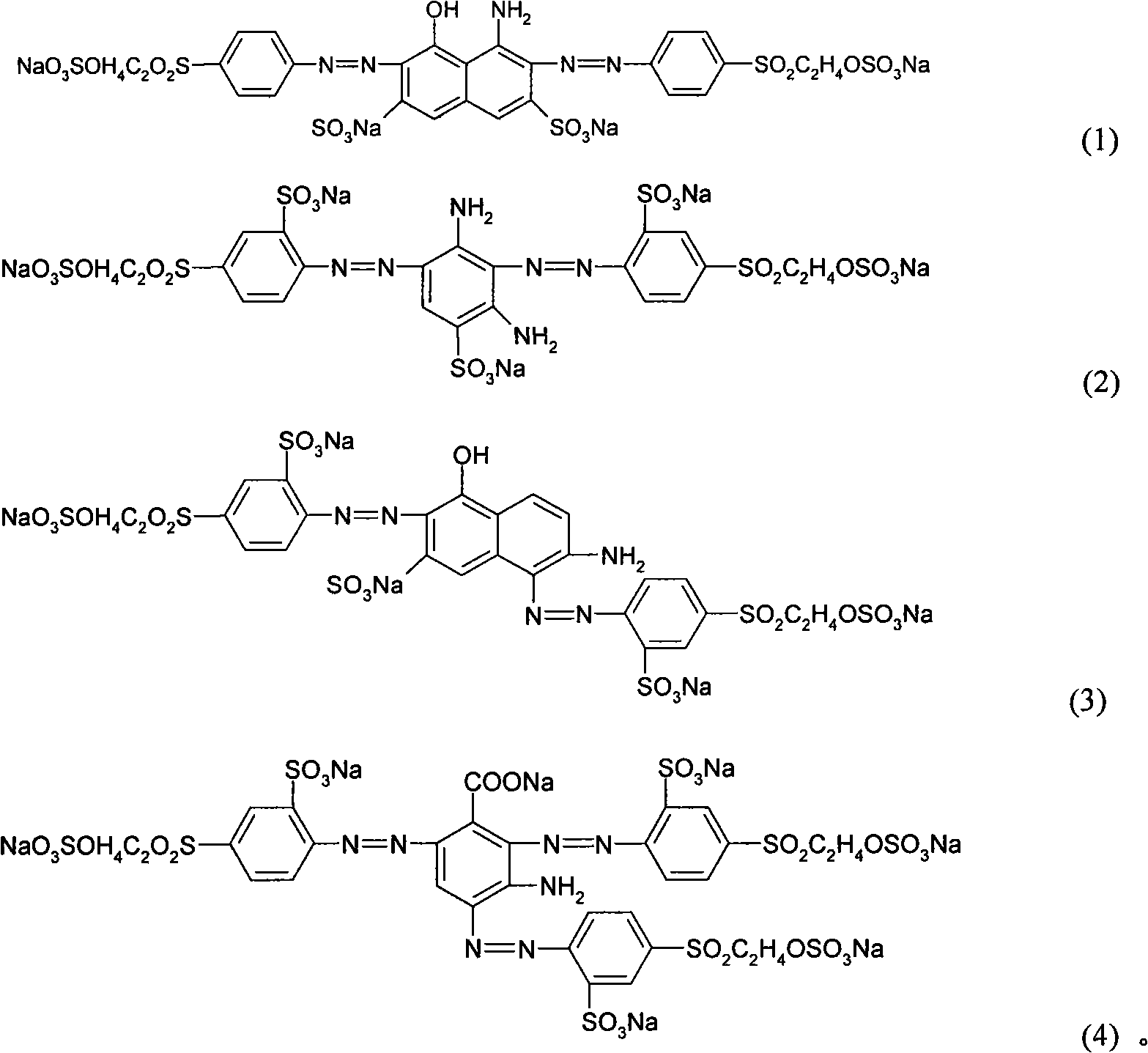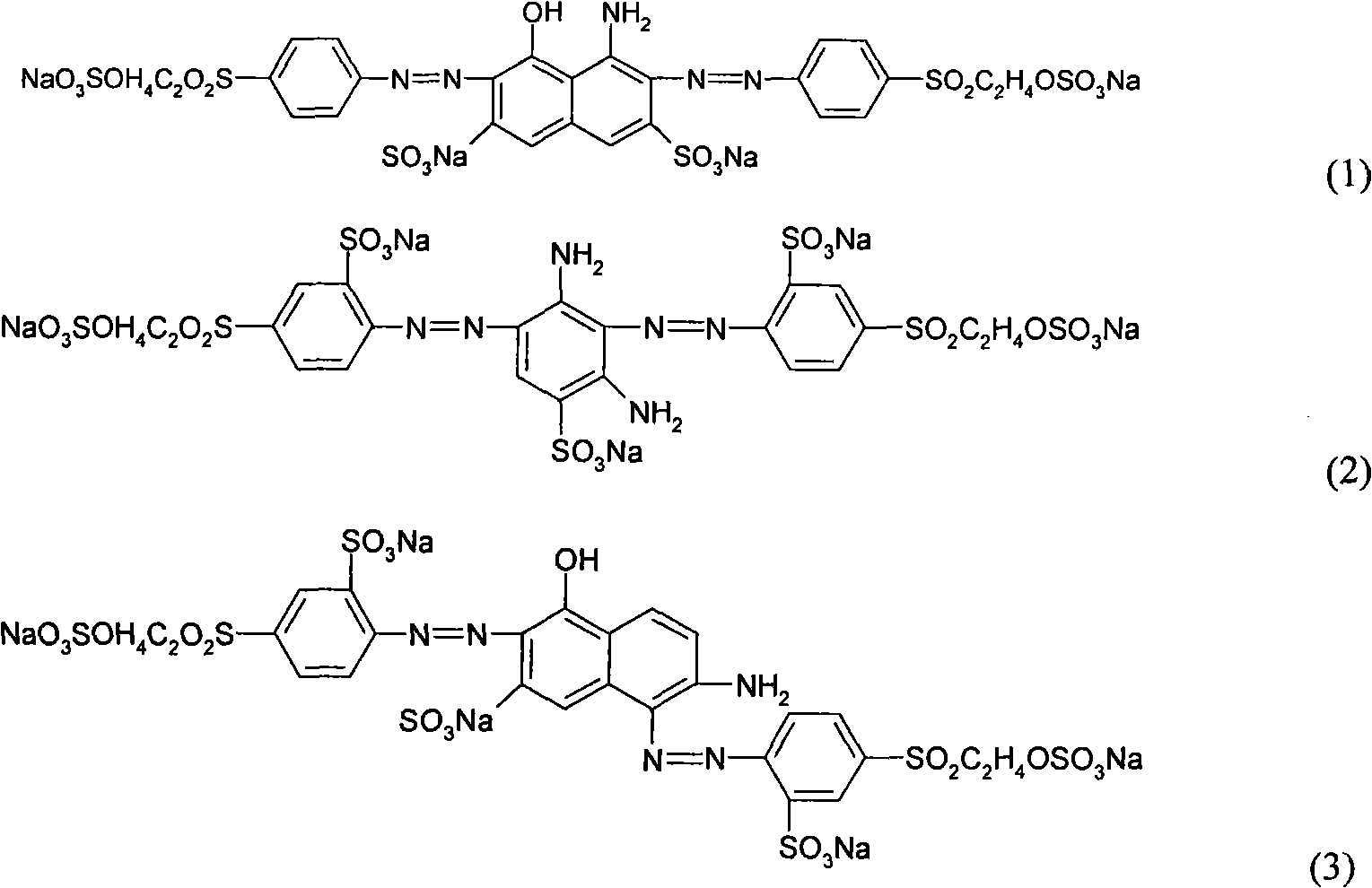Composite active black dye
A reactive black and dye technology, applied in the field of dyes, can solve the problems of difficulty in guaranteeing level dyeing and reproducibility, insufficient blackness and other problems, and achieve the effect of good color fixing ability, excellent color depth and high fixing ratio.
- Summary
- Abstract
- Description
- Claims
- Application Information
AI Technical Summary
Problems solved by technology
Method used
Image
Examples
Embodiment Construction
[0022] 82 parts of formula (1) dyes, 8 parts of formula (2) dyes, 2 parts of formula (3) dyes, 8 parts of formula (4) dyes are fully mechanically mixed to obtain the composite reactive black dye of the present invention.
[0023] Dyeing Instructions
[0024] Dyeing Instructions 1
[0025] Dissolve 1 g of the dye prepared in the above-mentioned manner with an appropriate amount of water, and then set the volume in a 250ml volumetric flask. Draw 50ml of dye solution and mix it with 50ml of water, then add 5g of cotton cloth and 6g of sodium sulfate, then raise the temperature to 60°C at a rate of 1°C / min, keep it for 30 minutes, add 2g of sodium carbonate, and keep it at 60°C for 30 minutes, then Take out the cotton cloth to be dyed, boil it with non-ionic detergent boiling soap for 15 minutes, then wash it with water and dry it at about 70 ℃, the result is better than KN-GRC black, BED black and ARC black, with better level dyeing property and washing fastness , jet blackness...
PUM
 Login to View More
Login to View More Abstract
Description
Claims
Application Information
 Login to View More
Login to View More - R&D
- Intellectual Property
- Life Sciences
- Materials
- Tech Scout
- Unparalleled Data Quality
- Higher Quality Content
- 60% Fewer Hallucinations
Browse by: Latest US Patents, China's latest patents, Technical Efficacy Thesaurus, Application Domain, Technology Topic, Popular Technical Reports.
© 2025 PatSnap. All rights reserved.Legal|Privacy policy|Modern Slavery Act Transparency Statement|Sitemap|About US| Contact US: help@patsnap.com



